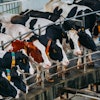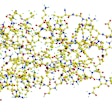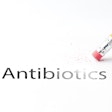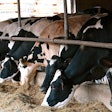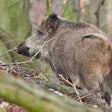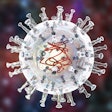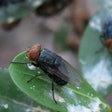
The U.S. Department of Agriculture (USDA) has announced its largest initiative yet to combat the New World screwworm (NWS). This announcement builds upon USDA’s five-pronged plan issued in June to combat the northward spread of NWS from Mexico into the United States.
While USDA is coordinating efforts to combat NWS, it will require continued collaboration between federal agencies, state governments and the private sector. USDA is working alongside the U.S. Food and Drug Administration to encourage animal drug development and prioritize approvals for prevention and treatment of the pest, the U.S. Environmental Protection Agency and the U.S. Department of Energy on new innovations to enhance the ability to combat the pest with technologies, and the U.S. Customs and Border Protection to protect the United States border. The United States government will also work alongside governors, state agriculture commissioners, state veterinarians and others to combat this pest.
As part of this comprehensive approach, USDA is taking the following immediate actions:
1. Innovate our way to eradication
While sterile flies are the most effective way to prevent the spread of NWS, technology continues to evolve and as such USDA will provide up to US$100 million to invest in viable innovations which could show rapid advancement of promising technologies that will augment the United States facility and accelerate the pace of sterile fly production if proven successful. USDA will support proven concepts that only require funding to scale and implement as well as a number of longer-term research projects focused on new sterile NWS production techniques, novel NWS traps and lures, NWS therapeutics that could be stockpiled and used should NWS reach the United States, and any other tools to bolster preparedness or response to NWS.
2. Construction of a domestic sterile screwworm production facility
USDA will construct a sterile fly production facility in Edinburg, Texas, at Moore Air Force Base, an ideal location due to the existing infrastructure and proximity to the United States-Mexico border. Built with the Army Corps of Engineers, the facility will produce up to 300 million sterile flies per week to combat NWS. This will be the only United States-based sterile fly facility and will work in tandem with facilities in Panama and Mexico to help eradicate the pest and protect American agriculture.
3. Wildlife migration prevention
Animals don’t know borders, and that leaves the U.S potentially vulnerable to NWS from wildlife migrating across the border. USDA is working aggressively to ramp up the hiring of USDA-employed mounted patrol officers, known as “Tick Riders,” and other staff who will focus on border surveillance. The Tick Riders, who are mounted on horseback, will be complemented by other animal health experts who will patrol the border in vehicles and will provide the first line of defense against an NWS outbreak along the United States-Mexico border.
USDA will also begin training detector dogs to detect screwworm infestations in livestock and other animals along the border and at various ports of entry. USDA is working closely with the U.S. Department of the Interior and the U.S Customs and Border Protection to monitor the border for NWS-infected wildlife that could pose a threat to the United States.
4. Stop NWS from spreading in Mexico
USDA Animal and Plant Health Inspection Service (APHIS) is working in collaboration with the National Service of Agri-Food Health, Safety and Quality (SENASICA) in Mexico to help them contain the pest south of the United States border by enhancing United States oversight, surveillance, improving case reporting, locking down animal movement to prevent further spread, providing traps, lures, training, and verification of Mexican NWS activities. Successful implementation will inform any future trade decisions impacting cattle movements on the southern border including the potential reopening of border areas.
5. Ensuring food safety in the U.S.
To date, NWS has not been reported or detected in the United States in animals. USDA’s Food Safety and Inspection Service inspects animals and carcasses at slaughter, including for NWS to keep the food supply safe.
